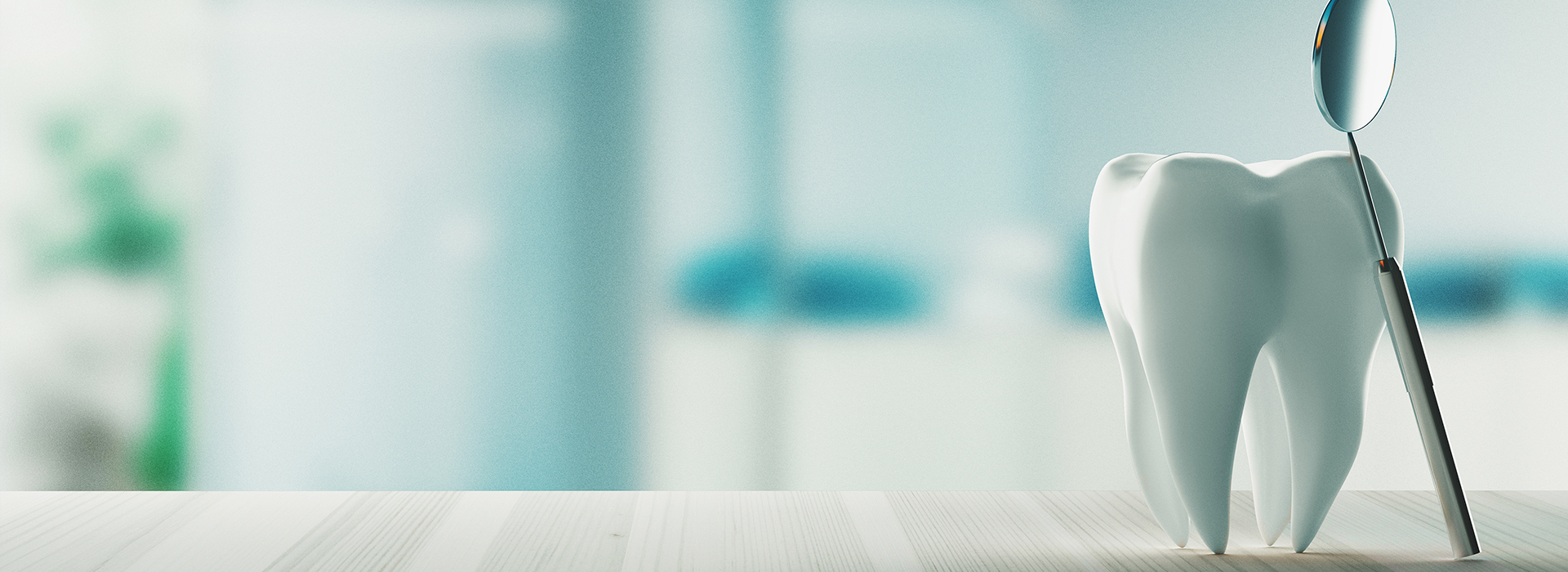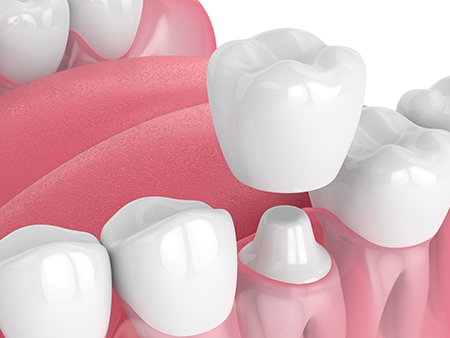
At Brilliant Dental of Salem, we approach restorative dentistry with an emphasis on durability, appearance, and long-term oral health. Ceramic crowns are a versatile solution when a tooth needs more support than a filling can provide — they restore chewing strength while preserving a natural look. Our goal is to help patients understand their options so they can make confident choices about care.
Modern ceramic crowns combine advances in material science with careful clinical technique. That means crowns today can be both strong enough for everyday use and subtle enough to blend with surrounding teeth. The information below explains when a crown is appropriate, what makes ceramic crowns distinct, and how we select and place the best solution for each mouth.
We tailor every treatment plan to each patient’s functional needs and cosmetic goals. If you’re considering a crown or want to learn whether a ceramic restoration is right for you, this overview will help you ask the right questions during your consultation.
A crown becomes the preferred option whenever a tooth’s remaining structure is insufficient to support a filling. Large cavities, fractured cusps, or teeth that have lost substantial enamel through wear or previous restorations often need full coverage to regain proper function. Crowns cap the entire visible portion of the tooth, protecting what’s left while restoring shape and strength.
Teeth that have received root canal therapy can be especially vulnerable to fracture because the procedure often removes internal tooth tissue. Placing a crown over a root canal–treated tooth helps prevent cracks and provides a stable surface for chewing. Similarly, teeth that serve as anchors for bridges or that replace missing teeth with implants typically require crowns to ensure longevity and fit.
Beyond purely structural reasons, crowns are sometimes recommended to address bite problems, correct the appearance of misshapen or discolored teeth, or replace worn restorations that no longer seal well. The decision to move from a large filling to a crown is made case-by-case, balancing functional needs with cosmetic priorities.

Ceramic crowns are prized for their ability to mimic the color, translucency, and surface texture of natural enamel. Unlike restorations with a metal core, all-ceramic crowns transmit light in a way that looks lifelike next to adjacent teeth, which is a major advantage for front-tooth restorations and smile-focused cases.
Material improvements have also strengthened ceramic options. Today’s ceramics offer a combination of toughness and resilience that rivals older metal-based crowns without introducing a metal margin at the gumline. Because they are metal-free, ceramic crowns avoid potential issues related to metal sensitivity and tend to be gentler to the surrounding soft tissues.
Other practical benefits include stain resistance, lower overall weight, and the possibility of a more conservative tooth preparation in some situations. Those qualities make ceramic crowns an attractive choice for patients who want a restoration that looks natural and performs reliably over many years.
Not all ceramic crowns are identical — different formulations suit different clinical needs. For example, some ceramics prioritize translucency and aesthetics for front teeth, while others emphasize strength for molars that endure heavy chewing forces. Our approach is to assess the tooth’s position, the patient’s bite dynamics, and the visual demands of the smile before recommending a material.
Common options include lithium disilicate, which balances beauty and strength; leucite-reinforced ceramics, known for a natural finish; and modern zirconia variants, which provide exceptional durability for high-stress areas. High-translucent zirconia is another option for cases that demand both strength and improved esthetics.
Selecting the right ceramic is a collaborative process. We consider the color and translucency of surrounding teeth, how much tooth reduction will be required, and whether adjacent restorations or implants affect the final design. The result is a customized restoration chosen to meet each patient’s specific functional and cosmetic requirements.

Placing a ceramic crown typically begins with a thorough assessment and digital or physical impressions to map the tooth and bite. We evaluate neighboring teeth and the overall smile to plan margin placement and color matching. When a crown follows a procedure like root canal therapy or implant placement, sequencing and timing are coordinated for the healthiest outcome.
Tooth preparation aims to remove damaged or inadequately supported material while preserving as much healthy structure as possible. A temporary crown may be placed to protect the prepared tooth while your final restoration is fabricated. Once the laboratory or in-office milling process produces the ceramic crown, we check fit, color, and contacts, making fine adjustments before final cementation.
After placement, we confirm that your bite is comfortable and that the crown looks harmonious with adjacent teeth. We also review hygiene and maintenance tips to support the long-term success of the restoration, including regular professional checkups and daily cleaning practices that help prevent problems at the margins.

At Brilliant Dental of Salem, clinical judgment and meticulous technique guide every restoration we place. We combine careful shade selection, detailed tooth preparation, and precise fitting to deliver crowns that meet both functional and cosmetic goals. Our focus is on predictable outcomes that help patients maintain comfortable, healthy smiles.
We work with trusted dental laboratories and modern fabrication methods to ensure each crown meets high standards for fit and finish. Whether a case calls for maximum esthetic blending or increased strength for a molar, we tailor the plan to the individual and explain the reasons behind our recommendations so patients feel informed and involved.
Long-term success depends on both excellent clinical work and consistent at-home care. During follow-up visits we evaluate the crown’s condition and surrounding tissues, addressing any concerns early. This proactive stance helps extend the life of restorations and supports overall oral health.
In summary, all-ceramic crowns offer an effective way to restore teeth that need more than a filling — combining strength, biocompatibility, and lifelike esthetics. If you would like to learn more about whether a ceramic crown is the right choice for your smile, please contact us for more information or to schedule a consultation.

A ceramic crown is a full-coverage tooth restoration fabricated entirely from tooth-colored ceramic materials designed to restore form and function. Unlike metal-based crowns or porcelain-fused-to-metal restorations, all-ceramic crowns contain no metal substructure, which allows them to transmit light similarly to natural enamel. This optical similarity makes ceramic crowns especially useful in visible areas of the mouth where appearance matters.
Beyond esthetics, modern ceramics have been engineered for improved strength and wear resistance, narrowing the performance gap with older metal-containing options. Ceramics also reduce the chance of a dark margin at the gumline and avoid concerns about metal sensitivity. The choice of crown type is made by weighing appearance, strength needs and the clinical situation for each tooth.
A ceramic crown is typically recommended when remaining tooth structure is insufficient to support a filling or when a large portion of the tooth is compromised by decay, fracture or previous restorations. Crowns provide full coverage that protects weakened cusps, restores occlusal function and reestablishes proper contours for chewing. Teeth that have undergone root canal therapy or serve as abutments for bridges or implants often benefit from the additional reinforcement a crown provides.
Decisions to move from a filling or onlay to a crown are made on a case-by-case basis, taking into account the amount of healthy tooth left, bite forces, and cosmetic goals. Your dentist will evaluate structural needs along with how the restoration will blend with adjacent teeth to recommend the most appropriate solution. Conservative options are considered first, but long-term function and protection are prioritized when a crown is indicated.
Several ceramic formulations are used for crowns, each offering a different balance of strength and esthetics. Lithium disilicate is noted for its translucency and good strength, making it a popular choice for front and some premolar restorations. Zirconia provides exceptional durability and is often chosen for molars or patients with heavy bite forces; newer high-translucency zirconia variants aim to improve esthetics while retaining strength.
Other options, such as leucite-reinforced ceramics, prioritize a highly natural surface texture and color match for smile-focused cases. Material selection depends on the tooth’s location, functional demands, and the patient’s cosmetic priorities. Your dentist will explain the properties of each option and how they relate to longevity and appearance in your specific case.
Initial treatment begins with a comprehensive exam, digital imaging and shade selection to plan the restoration precisely, and impressions (digital or traditional) to capture tooth anatomy and bite relationships. Tooth preparation involves removing damaged or unsupported enamel and shaping the tooth to accommodate the crown while conserving as much healthy structure as possible. If needed, a temporary crown protects the prepared tooth while the final restoration is fabricated, and any sequence involving root canal therapy or implants is coordinated for optimal healing and fit.
Laboratory-fabricated crowns or in-office milled restorations are finished to match color and occlusion, then tried in to verify margins, contacts and esthetics before final cementation. After the crown is bonded, your dentist will confirm that your bite is comfortable and make any fine adjustments to ensure proper function. Follow-up visits allow the team to assess how the crown is integrating with surrounding tissues and to reinforce home care guidance.
At Brilliant Dental of Salem, we emphasize precise shade mapping and fit to deliver crowns that meet both cosmetic and functional goals, and we work closely with trusted laboratories or use modern milling workflows when appropriate. Communication about expectations and postoperative care is part of the process to support predictable results. Patients are encouraged to report any sensitivity, unusual sensations or concerns early so adjustments can be made promptly.
Caring for a ceramic crown is much like caring for natural teeth: maintain daily brushing with a fluoride toothpaste and interdental cleaning to remove plaque at the crown margin and adjacent gumline. Regular professional cleanings and checkups allow clinicians to monitor the crown’s condition, check margins for signs of leakage and address wear on opposing teeth. Good oral hygiene reduces the risk of decay developing at the crown-tooth interface, which is a common cause of failure.
Avoiding habits that place excessive stress on restorations, such as chewing ice, opening packages with your teeth or habitual grinding without a night guard, can protect the crown from chipping or fracture. If you have bruxism, your dentist may recommend a custom night guard to distribute forces more evenly. Promptly reporting sensitivity, looseness or changes in bite helps identify problems early and preserve the restoration.
Ceramic crowns can last many years when designed, fabricated and maintained properly; clinical longevity depends on factors such as material choice, the quality of tooth preparation and cementation, oral hygiene and the patient’s bite dynamics. Robust materials like zirconia tend to resist fracture and wear, especially in posterior teeth, while highly esthetic ceramics may require more careful management in high-stress situations. Proper occlusal adjustment at the time of placement reduces concentrated forces that can shorten a crown’s functional life.
Patient-specific factors also play a role: a history of bruxism, heavy chewing forces, or poor oral hygiene can increase the risk of complications and require additional protective measures. Regular dental visits to monitor the crown, surrounding tissues and opposing teeth make it possible to catch and correct issues before they lead to failure. With attentive care and appropriate material selection, many ceramic crowns provide durable, satisfactory results for a decade or longer.
Ceramic crowns are generally biocompatible and well tolerated by most patients because they are metal-free and do not release metal ions into surrounding tissues. For patients with known metal sensitivities or those who prefer an all-ceramic restoration for health or aesthetic reasons, ceramic crowns are often an excellent alternative to metal-containing options. The smooth ceramic surface also tends to be gentle on the adjacent gum tissue when margins are carefully placed and maintained.
Allergic reactions to dental ceramics are rare, but if you have a history of sensitivities it’s important to discuss this with your dentist so material choices can be tailored accordingly. Good periodontal health around the restoration and precise fit reduce irritation and contribute to long-term comfort. The dental team will screen for any relevant medical or allergy history and recommend the most appropriate ceramic formulation for your needs.
Yes, ceramic crowns can be used on molars, but material selection and design must account for the higher occlusal forces in the posterior region. High-strength ceramics such as modern zirconia are frequently recommended for molars because they provide superior fracture resistance compared with more translucent, esthetic ceramics. In some cases a layered approach is used, combining a strong zirconia core with a more esthetic outer ceramic to balance durability and appearance.
The restoration’s thickness, margin design and how the crown interfaces with opposing teeth are all critical to longevity in high-load areas. Your dentist will analyze bite forces, parafunctional habits and the opposing dentition to determine whether a ceramic crown is suitable or whether alternative designs are preferable. When properly planned and fabricated, ceramic crowns can perform reliably even in demanding chewing environments.
Ceramic crowns generally offer superior esthetics because they mimic the translucency and surface characteristics of natural enamel without a visible metal substructure, which eliminates the risk of a dark margin at the gumline. Porcelain-fused-to-metal crowns can deliver excellent strength due to their metal core, but they sometimes sacrifice lifelike optical properties, particularly at the margins or under thin ceramic veneering. For anterior teeth or highly visible restorations, all-ceramic crowns are often preferred for a more natural appearance.
Functionally, modern ceramics have improved considerably and can rival metal-based restorations in durability when the correct material is chosen for the tooth’s role. The decision between all-ceramic and porcelain-fused-to-metal restorations is based on esthetic priorities, strength requirements, gum tissue considerations and the clinical situation. Your dentist will discuss the tradeoffs and recommend the option that best meets your long-term functional and cosmetic goals.
Minor chips in a ceramic crown can sometimes be smoothed or repaired with composite resin in the dental office, depending on the location and extent of the damage. Larger fractures, compromised margins or crowns that have become loose usually require replacement to restore proper fit, seal and function. The choice to repair versus replace will depend on the crown’s structural integrity, esthetic considerations and whether the underlying tooth remains healthy.
If a crown becomes loose, it is important to see your dentist promptly to avoid decay or damage to the prepared tooth beneath. Re-cementation may be possible after cleaning and evaluation, but persistent looseness often indicates the need for a new restoration. Timely assessment helps preserve remaining tooth structure and avoids more extensive treatment in the future.

Ready to schedule your next dental appointment or have questions about our services?
Contacting Brilliant Dental of Salem is easy! Our friendly staff is available to assist you with scheduling appointments, answering inquiries about treatment options, and addressing any concerns you may have. Whether you prefer to give us a call, or fill out our convenient online contact form, we're here to help. Don't wait to take the first step towards achieving the smile of your dreams – reach out to us today and discover the difference personalized dental care can make.